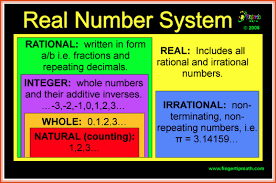Spectroscopy
Principles of Spectroscopy
Interaction of radiation and matter
If matter is exposed to electromagnetic radiation, e.g. infrared light, the radiation can be absorbed, transmitted,
reflected, scattered or undergo photoluminescence. Photoluminescence is a term used to designate a number of effects,
including fluorescence, phosphorescence, and Raman scattering.
Electromagnetic Spectrum
Type of Radiation Frequency :Range (Hz):Wavelength Range:Type of Transition
Gamma-rays 1020-1024 <10-12 m nuclear
X-rays 1017-1020 1 nm-1 pm inner electron
Ultraviolet 1015-1017 400 nm-1 nm outer electron
Visible 4-7.5x1014 750 nm-400 nm outer electron
Near-infrared 1x1014-4x1014 2.5 mm-750 nm outer electron molecular
vibrations
Infrared 1013-1014 25 mm-2.5 mm molecular vibrations
Microwaves 3x1011-1013 1 mm-25 mm molecular rotations,
electron spin flips*
Radio waves <3x1011 >1 mm >1 mm
TYPES OF OPTICAL INSTRUMENTS
• Spectroscope: uses human eye as a detector
• Spectrograph: photographic emulsion used as detector
• Spectrometer: has photoelectric readout
1. Monochromator: one exit slit, Greek for
"one color"
2. Polychromator: multiple exit slits
• Spectrophotometer:electronics takes ratio of two
beams (%T), may be at same or
different wavelengths, may be single beam or
double beam
Various Relaxation (de-excitation) Modes
• Relaxation by emission of the same wavelength
– atomic
– refer back to the emission spectra of brine
• Non-radiative
– molecular usually
• Fluorescence
– molecular usually
• Phosphorescence
– molecular usuall
Phosphorescence
• A molecule is excited by EM radiation
• A transition takes place from some state (usually ground) to
an excited state
• Relaxation back to that ground state takes place over
relatively long periods
– The excited state is actually a metastable state, meaning
that it is more stable than an excited state but still less
stable (thermodynamically) than the ground state
– E-5 seconds to minutes or hours after excitation
• Chemiluminescence
– light sticks, etc…...
Fluorescence
• Resonance Fluorescence
– Usually atomic
– Emitted light has same E as excitation light
– Simpler, atomic systems with fewer energy
states (vs molecules) undergo resonance
fluorescence
• Not as widely used in analytical chemistry as
non-resonance fluorescence
– Hg analysis is one example
Non-resonance Fluorescence
• Typical of molecular fluorescence
• Large number of excited states
– rotational
– vibrational
– etc..
• Molecules relax by ‘stepping’ from one state to another
• Resulting emitted light “shifts” to lower energies
– longer wavelengths
– Stokes Shift
Some Basic Concepts…...
• Why are even “line” spectra not truly lines?
– They are really broad distributions that are just over a
range of about 1 nm or less.
• Some of this (especially with respect to lines) is due to the
uncertainty principle!
• Remember, than an atom or molecule does not go from one
distinct energy state to another
– it goes from some “high probability’ state to another
“high probability” state
– we can never know the exact energy
– limited by h/t
– Heisenberg’s Uncertainty Principle in action!
Interaction of radiation and matter
If matter is exposed to electromagnetic radiation, e.g. infrared light, the radiation can be absorbed, transmitted,
reflected, scattered or undergo photoluminescence. Photoluminescence is a term used to designate a number of effects,
including fluorescence, phosphorescence, and Raman scattering.
Electromagnetic Spectrum
Type of Radiation Frequency :Range (Hz):Wavelength Range:Type of Transition
Gamma-rays 1020-1024 <10-12 m nuclear
X-rays 1017-1020 1 nm-1 pm inner electron
Ultraviolet 1015-1017 400 nm-1 nm outer electron
Visible 4-7.5x1014 750 nm-400 nm outer electron
Near-infrared 1x1014-4x1014 2.5 mm-750 nm outer electron molecular
vibrations
Infrared 1013-1014 25 mm-2.5 mm molecular vibrations
Microwaves 3x1011-1013 1 mm-25 mm molecular rotations,
electron spin flips*
Radio waves <3x1011 >1 mm >1 mm
TYPES OF OPTICAL INSTRUMENTS
• Spectroscope: uses human eye as a detector
• Spectrograph: photographic emulsion used as detector
• Spectrometer: has photoelectric readout
1. Monochromator: one exit slit, Greek for
"one color"
2. Polychromator: multiple exit slits
• Spectrophotometer:electronics takes ratio of two
beams (%T), may be at same or
different wavelengths, may be single beam or
double beam
Various Relaxation (de-excitation) Modes
• Relaxation by emission of the same wavelength
– atomic
– refer back to the emission spectra of brine
• Non-radiative
– molecular usually
• Fluorescence
– molecular usually
• Phosphorescence
– molecular usuall
Phosphorescence
• A molecule is excited by EM radiation
• A transition takes place from some state (usually ground) to
an excited state
• Relaxation back to that ground state takes place over
relatively long periods
– The excited state is actually a metastable state, meaning
that it is more stable than an excited state but still less
stable (thermodynamically) than the ground state
– E-5 seconds to minutes or hours after excitation
• Chemiluminescence
– light sticks, etc…...
Fluorescence
• Resonance Fluorescence
– Usually atomic
– Emitted light has same E as excitation light
– Simpler, atomic systems with fewer energy
states (vs molecules) undergo resonance
fluorescence
• Not as widely used in analytical chemistry as
non-resonance fluorescence
– Hg analysis is one example
Non-resonance Fluorescence
• Typical of molecular fluorescence
• Large number of excited states
– rotational
– vibrational
– etc..
• Molecules relax by ‘stepping’ from one state to another
• Resulting emitted light “shifts” to lower energies
– longer wavelengths
– Stokes Shift
Some Basic Concepts…...
• Why are even “line” spectra not truly lines?
– They are really broad distributions that are just over a
range of about 1 nm or less.
• Some of this (especially with respect to lines) is due to the
uncertainty principle!
• Remember, than an atom or molecule does not go from one
distinct energy state to another
– it goes from some “high probability’ state to another
“high probability” state
– we can never know the exact energy
– limited by h/t
– Heisenberg’s Uncertainty Principle in action!


Comments
Post a Comment